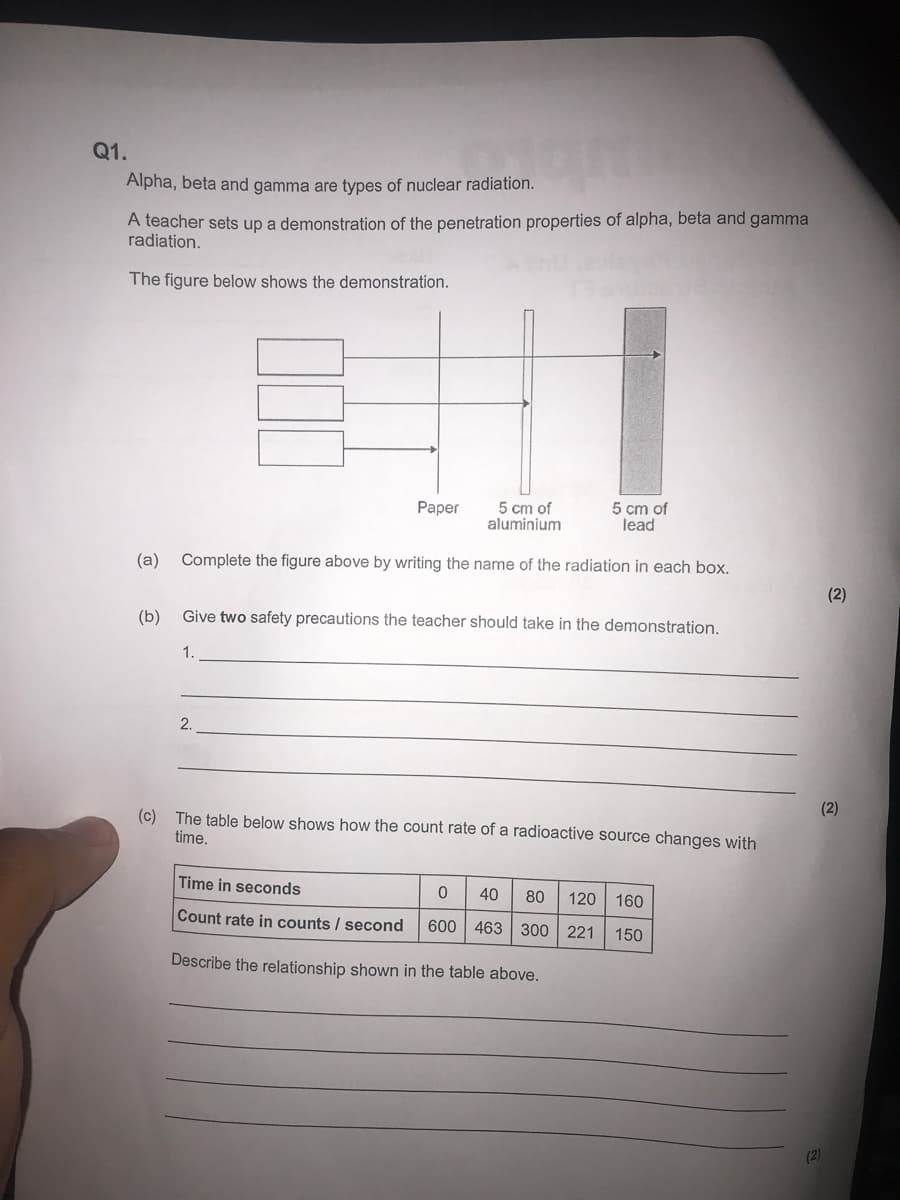Q1. Alpha, beta and gamma are types of nuclear radiation. A teacher sets up a demonstration of the penetration properties of alpha, beta and gamma radiation. The figure below shows the demonstration. 5 cm of aluminium 5 cm of lead Paper (a) Complete the figure above by writing the name of the radiation in each box. (b) Give two safety precautions the teacher should take in the demonstration. 1. 2. (2 (c) The table below shows how the count rate of a radioactive source changes with time. Time in seconds 40 80 120 160 Count rate in counts / second 600 463 300 221 150 Describe the relationship shown in the table above.
Radioactive decay
The emission of energy to produce ionizing radiation is known as radioactive decay. Alpha, beta particles, and gamma rays are examples of ionizing radiation that could be released. Radioactive decay happens in radionuclides, which are imbalanced atoms. This periodic table's elements come in a variety of shapes and sizes. Several of these kinds are stable like nitrogen-14, hydrogen-2, and potassium-40, whereas others are not like uranium-238. In nature, one of the most stable phases of an element is usually the most prevalent. Every element, meanwhile, has an unstable state. Unstable variants are radioactive and release ionizing radiation. Certain elements, including uranium, have no stable forms and are constantly radioactive. Radionuclides are elements that release ionizing radiation.
Artificial Radioactivity
The radioactivity can be simply referred to as particle emission from nuclei due to the nuclear instability. There are different types of radiation such as alpha, beta and gamma radiation. Along with these there are different types of decay as well.

Trending now
This is a popular solution!
Step by step
Solved in 2 steps with 1 images









